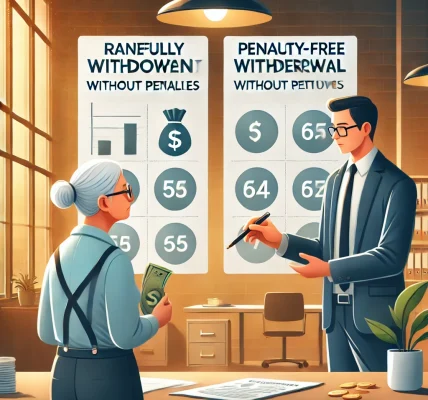Introduction
Retirement is a time to enjoy life, travel, and spend quality moments with loved ones. However, one of the biggest concerns for retirees is ensuring that their savings last throughout their lifetime. Running out of money can be a real fear, but with proper financial planning, smart investment strategies, and disciplined spending habits, you can stretch your retirement fund without sacrificing your lifestyle.
This guide provides practical and actionable steps to make your retirement savings last longer while maintaining financial independence and a comfortable lifestyle.
1. Start with a Well-Defined Retirement Budget
Assess Your Expenses
Creating a realistic budget is the first step in ensuring your retirement fund lasts. Identify your essential and discretionary expenses, including:
- Housing (mortgage, rent, maintenance, property taxes)
- Utilities and insurance
- Healthcare and medical costs
- Daily living expenses (food, transportation, etc.)
- Travel and entertainment
- Charitable contributions and gifting
Reduce Unnecessary Expenses
Cutting back on non-essential spending can help stretch your savings. Look for ways to reduce costs without drastically changing your lifestyle, such as:
- Downsizing your home to lower maintenance and property taxes
- Taking advantage of senior discounts
- Reducing subscriptions or memberships you no longer use
2. Invest Wisely for Long-Term Stability
Diversify Your Investment Portfolio
A well-balanced investment strategy can help grow your savings while managing risk. Consider a mix of:
- Stocks: Provide long-term growth potential
- Bonds: Offer stability and income
- Real Estate: Can generate passive rental income
- Dividend Stocks or ETFs: Provide consistent cash flow
- Annuities: Guarantee income for life
Follow a Safe Withdrawal Strategy
The “4% rule” is a popular guideline for withdrawing from your retirement savings. This means you withdraw 4% of your total savings annually, adjusting for inflation. However, it’s essential to revisit and adjust this strategy based on market conditions and personal circumstances.
3. Maximize Social Security and Pension Benefits
Delay Social Security Withdrawals
If possible, delay claiming Social Security benefits until full retirement age or later. The longer you wait (up to age 70), the higher your monthly benefits will be.
Optimize Pension Plans
If you have a pension, explore different payout options to maximize lifetime benefits. Some retirees choose annuities for a steady income stream.
4. Manage Healthcare Costs Effectively
Consider Medicare and Supplemental Insurance
Healthcare costs can deplete savings quickly. Enroll in Medicare on time and consider supplemental insurance to cover additional expenses.
Use Health Savings Accounts (HSAs)
If eligible, an HSA is a tax-advantaged way to save for medical expenses in retirement. Funds roll over annually and can be withdrawn tax-free for qualified expenses.
5. Generate Passive Income Streams
Rental Income
Owning rental properties can provide a steady income. Consider downsizing and renting out part of your home or investing in rental properties.
Dividend and Interest Income
Invest in dividend-paying stocks, mutual funds, or bonds to create passive income.
Part-Time Work or Consulting
Many retirees enjoy part-time work or consulting in their field. It keeps them engaged while supplementing their income.
6. Plan for Inflation and Market Fluctuations
Adjust Your Investment Strategy
Invest in assets that outpace inflation, such as equities, real estate, and inflation-protected securities.
Maintain a Cash Reserve
Having 1-2 years’ worth of expenses in cash or liquid assets prevents the need to sell investments during market downturns.
7. Avoid Costly Financial Mistakes
Steer Clear of High-Interest Debt
Pay off credit card balances and high-interest loans to prevent financial strain in retirement.
Be Cautious with Large Expenses
Major purchases like luxury cars or vacation homes should be carefully planned to avoid depleting savings.
Protect Against Scams and Fraud
Retirees are often targets for financial scams. Stay informed and work with trusted financial advisors.
Conclusion
Ensuring your retirement fund lasts a lifetime requires proactive financial planning, smart investments, and mindful spending. By budgeting wisely, diversifying income sources, managing healthcare expenses, and staying financially disciplined, you can enjoy a comfortable and fulfilling retirement without the fear of running out of money.
Taking these steps today will provide long-term security, allowing you to maintain your lifestyle and financial independence throughout retirement.




